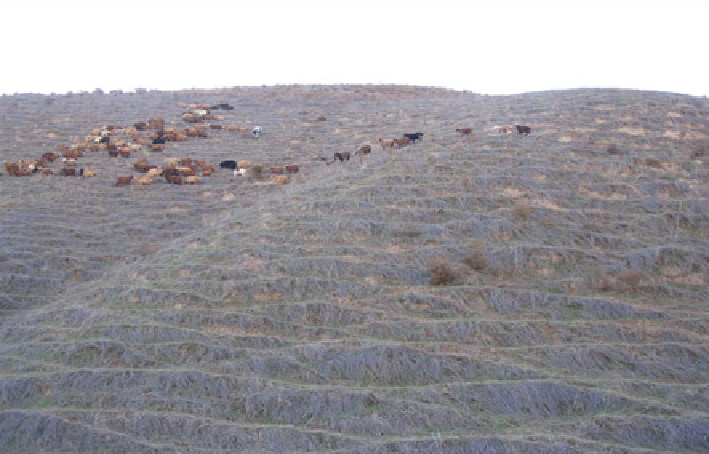Geoscience Reference
In-Depth Information
Fig. 18.2
Overgrazing leads to loss of vegetation and accelerated run off and soil loss (Photo by
author)
Soil erosion, including wind or water erosions, is one of the most important
elements of land degradation in Iran. Besides over-exploitation of land resources
as a result of population growth and lack of proper solutions for land management
are also accounted among other factors contributing to land degradation in Iran. Of
the total land area of the Country, approximately 75 million hectares are exposed to
water erosion, 20 million hectares to wind erosion and the remaining five million
hectares to other types of chemical and physical degradations. As a result, about
two million hectares are in danger of infertility, two million hectares are exposed to
salinization and one million hectares are threatened by other types of degradation
(Figs.
18.3
and
18.4
).
Deforestation and desertification adversely affect agricultural productivity, the
health of humans as well as of livestock, and economic activities such as eco-
tourism. Land degradation and desertification in Iran have accelerated during recent
decades due to the following factors:
•
Population has doubled during the period 1979-2009.
•
More agricultural and pastoral products have forced people to use land exten-
sively or convert forest and rangelands to cultivated land.
•
Over use of wood and plants as fuel for household cooking and heating tends to
denude the soil and intensify desertification.
•
Irregular and uncoordinated exploitation of water resources.

Search WWH ::

Custom Search